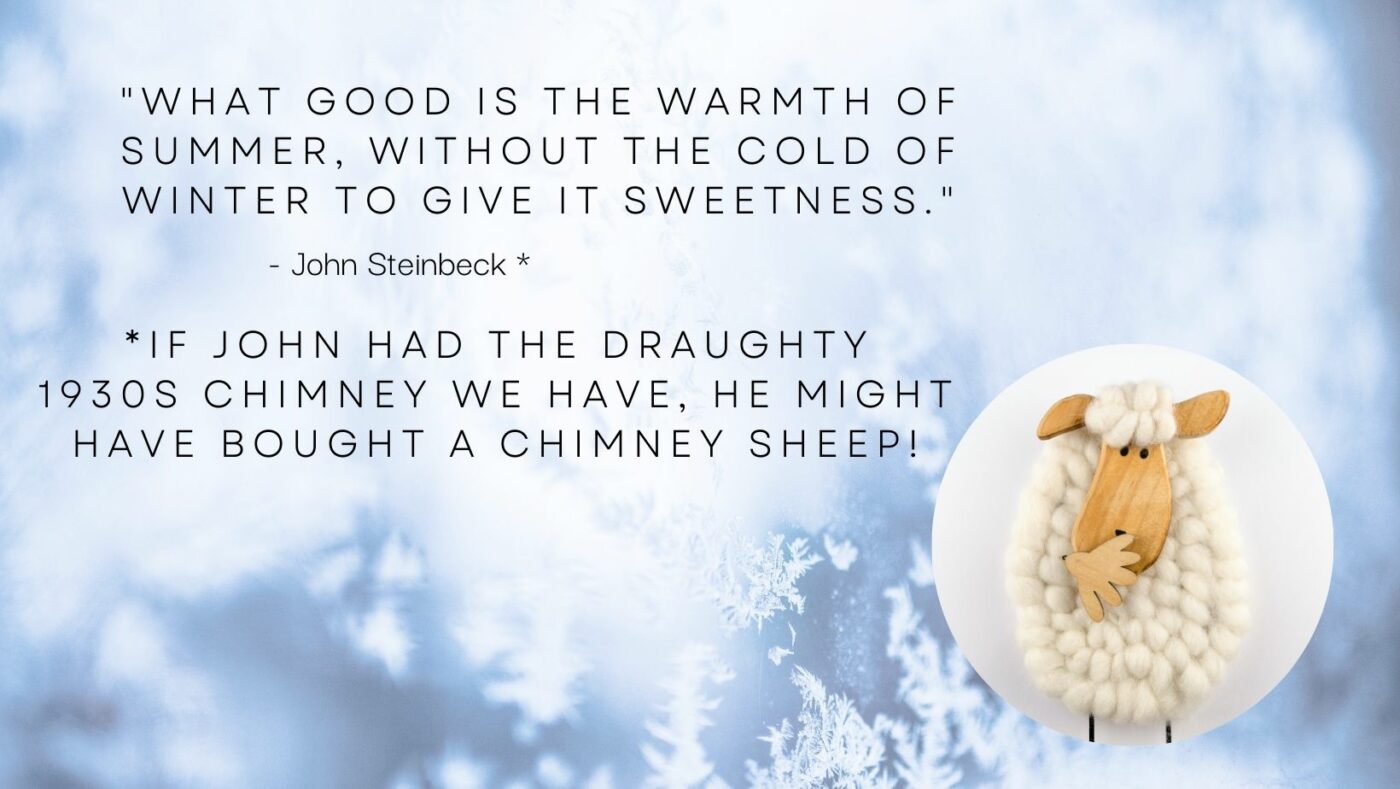Like many Chippenham residents our house on Langley Road was built in the 1930s and featured a fireplace in the front room. We hadn’t ever lit a real fire in the fire place, though as we could often hear the pigeons on top of the chimney from the living room, it seemed reasonably safe to assume it was open to the elements and not blocked off. We could also tell this by the wind whistling up the chimney when it was a blowing a hoolie outside!
I had heard of ‘Chimney balloons’, but I was wary of completely blocking off all ventilation. We had a gas combi-boiler in the kitchen cupboard, and an original wall vent at the front of the house. I had read enough to know that as you start to insulate an old house and remove draughts, you do need to ensure that you are adequately ventilated to maintain a healthy breathable atmosphere, and to reduce condensation and potential mould issues. So when I read about the more natural solution of the ‘Chimney Sheep’, I decided this was worth a try. I liked that it still allowed some natural ventilation whilst stopping 95% of draughts.
The Chimney Sheep costs under £30 to buy and is easy to self install, so it’s a very low cost and potentially high impact change.

As you might guess from the name a Chimney Sheep is made from wool. Specifically Herdwick wool started from a small workshop in Cumbria in 2012.
The manufacturer says…
A Chimney Sheep® is a removable chimney draught excluder made from highly durable, naturally breathable Herdwick wool. The wool is felted to create a perfect plug for the chimney and a handle added for easy insertion and removal. A Chimney Sheep® makes your home feel more comfortable by stopping warm air escaping and preventing cold air from coming in, whilst providing sufficient ventilation to prevent damp issues occurring. Installing a Chimney Sheep will make your home feel warmer, reduce wind noise, heating bills, CO2 emissions and prevent any debris fall down from the chimney into your hearth.
- An open chimney is likely to be the single biggest source of air loss in a home. It is comparable to leaving a window open all the time, except that the passage of warm air out is exacerbated by a phenomenon known as the stack effect.
- Open chimneys will draw an average of 80 cubic metres of air out of a building per hour, more often than not it is warm air produced from our heating systems!
- The volume of air that escapes needs to be replaced, so cold air is pulled in from other leaky parts of the building, such as keyholes, gaps around your doors and tiny gaps around your windows
Perhaps the most difficult part of ordering the chimney sheep is getting the sizing correct. Hanging upside down trying to measure the width of an old chimney isn’t the most pleasant thing, but it is critical to follow the Chimney Sheep measurement guide as it needs to be just the right size to hold itself in place when you push it up into the chimney. It comes with a handle attached should you need to remove it.
I didn’t get the measurements perfect, and wish I had taken a bit more care at this stage, but the product that arrived was good enough for it to stay in place with no gaps, even though it was a little bit too big length ways.

We noticed an immediate effect from installing the Chimney Sheep. The living room felt noticeably less draughty, but still felt ventilated. We’ve had it installed for around four years now and haven’t noticed any noticeable increase in condensation in the living room. I haven’t accurately measured the heat losses, but it always feels warm in the living room, though we do get some window condensation as we did before. So I think been a great low cost easy DIY solution to reduce heat loss and draughts.
Please note if you have a wood burner or gas fire in your fire place, or your fire place is used as a gas flue for your boiler, then you mustn’t install a chimney sheep, and should seek further advice. If you occasionally light a fire in the chimney then you can tie a visible hanging tag to the chimney sheep to remind you to remove it before lighting the fire!
This post isn’t in any way affiliated with the company Chimney Sheep. It’s presented as a possible simple low cost DIY solution to help energy efficiency. It worked for us in our 1930’s semi-detached house in Langley Road, Chippenham – Matthew


